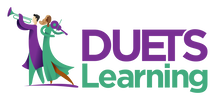|
It’s funny how life works. Experiences that seemed like a waste of time turn into blessings years later. Of course, two things can be true simultaneously – an experience can be a waste of time and still later prove to be valuable. You see, in the early 2000s, I constantly played The Sims, or rather, The Sims played me. The original Sims game was an interesting diversion, but the The Sims 2 was everything. For the uninitiated, The Sims is a life simulation game (which now sounds awful). It was a digital doll house to me. Game play became more nuanced via expansion packs and as the sims became more independent (don’t ask), but I still felt like I was playing with dolls, something I was clearly fine with for some reason.
Create people, not characters
A sim’s behavior is influenced by a mixture of its personality, wants, and fears. When I create characters for my courses, I consider these three factors while fleshing out who these people are, even if it’s only for me. Once, when I was in the throes of my Sims habit, I designed and developed an ILT performance management course that included four employees who needed to be led through the process. I broke the class into teams and assigned each one an employee. I used my Sims skills to create characters who seemed so real that the teams started giving the fake employees back stories. There was one fake employee who was so insubordinate and churlish that every team that got her wanted to fire her immediately. While I found it humorous that they were so personally offended by a fictional character’s antics, I loved that their desire to fire her for her behavior (and the belief that they actually could) always led to several teachable moments. Here are three strategies I use to create people instead of characters:
Competing against yourself can be fun too In the early days, a big complaint traditional gamers had about The Sims was that game play didn’t depend on winning and losing. That was true, but you did have one competitor and it’s the same one you had in real life – time. Can my sim get enough skills so that he can get that promotion before he has to retire? Whose lot should I play to make sure the ages line up (I told you not to ask)? So while you weren’t competing against some 13-year-old named MADDOGGXXX, you pushed yourself to create the neighborhood you wanted. Of course, once you learned the cheat codes, gameplay became focused on how you planned to use them (“You get a car and you get a car and you…!”). I learned that there is still a place in this connected world for single-player games and the people who prefer them. The Sims was wildly successful in its glory days despite not having the ability to "finish him." Sometimes, just besting your previous score is its own reward. Here are few example strategies I use:
We all have biases The Sims gives you the tools to make anyone you want and give them exactly type of the life you want them to have. Here’s your chance to make the world all over again. In doing so, you find yourself making lots of conscious and unconscious choices. Who gets the big houses, the best jobs, and the happily ever after? Who reaps the benefit of your financial cheat codes and who has to come up the hard way? Well, I have news for you. When given the chance to create your own world, you’ll probably create one that functions remarkably similar to the imperfect one you live in now. I’ve always thought that The Sims would be an excellent tool for uncovering hidden biases. I think if most long-time Sims players conducted an ethnographic study on the worlds they’ve created, they’d be surprised by how much bias influenced their game play. I consider what I learned about my own bias when I create characters, or write about any fictional person, in the training I create. I applaud The eLearning Brothers and eLearning Art for providing access to images of people of all shapes, sizes, colors, ages, and abilities. It makes it easier to make the conscious decision to go against those instincts that tend to creep up when deciding who should play the CEO and who should play the assistant. Here are few example strategies I use:
In looking up the link to The Sims website (I suppose I could have guessed it), I saw that they released The Sims 4 and few years ago and speculation about The Sims 5 release date is in the "rumored" stages. I'm not worried. I’m 12 years clean and plan to stay that way. But I mean, there’s no harm in just reading about the new features. Is there?
0 Comments
Your comment will be posted after it is approved.
Leave a Reply. |
�
AuthorHadiya Nuriddin is the CEO of Focus Learning Solutions and the founder of Fresh Eye Reviews. Categories
All
Stay up to date!
Enter your email to get a monthly digest of blog posts and other Focus Learning Solutions insights and news (we will not sell your email address). Archives
September 2016
|



 RSS Feed
RSS Feed
